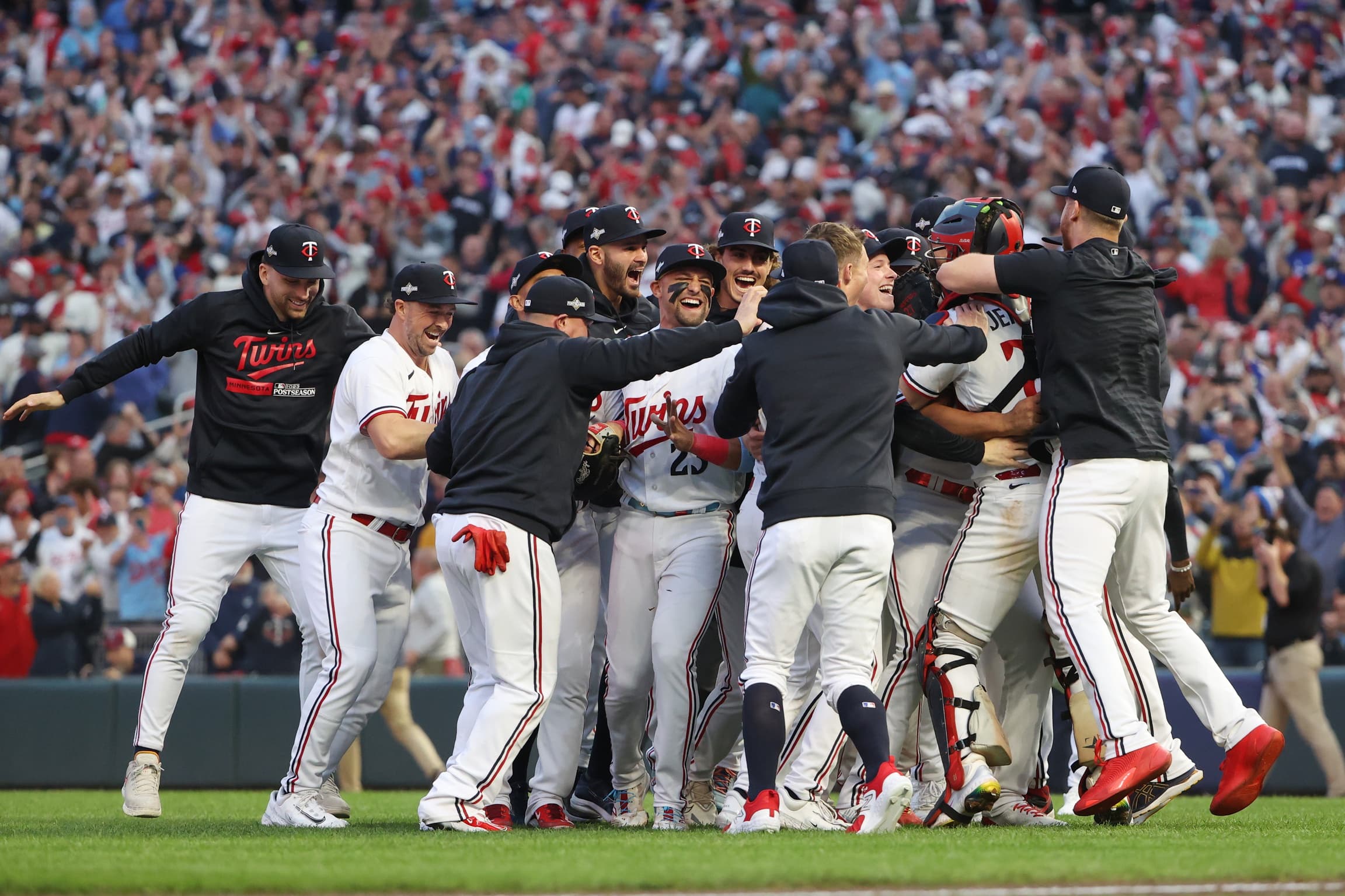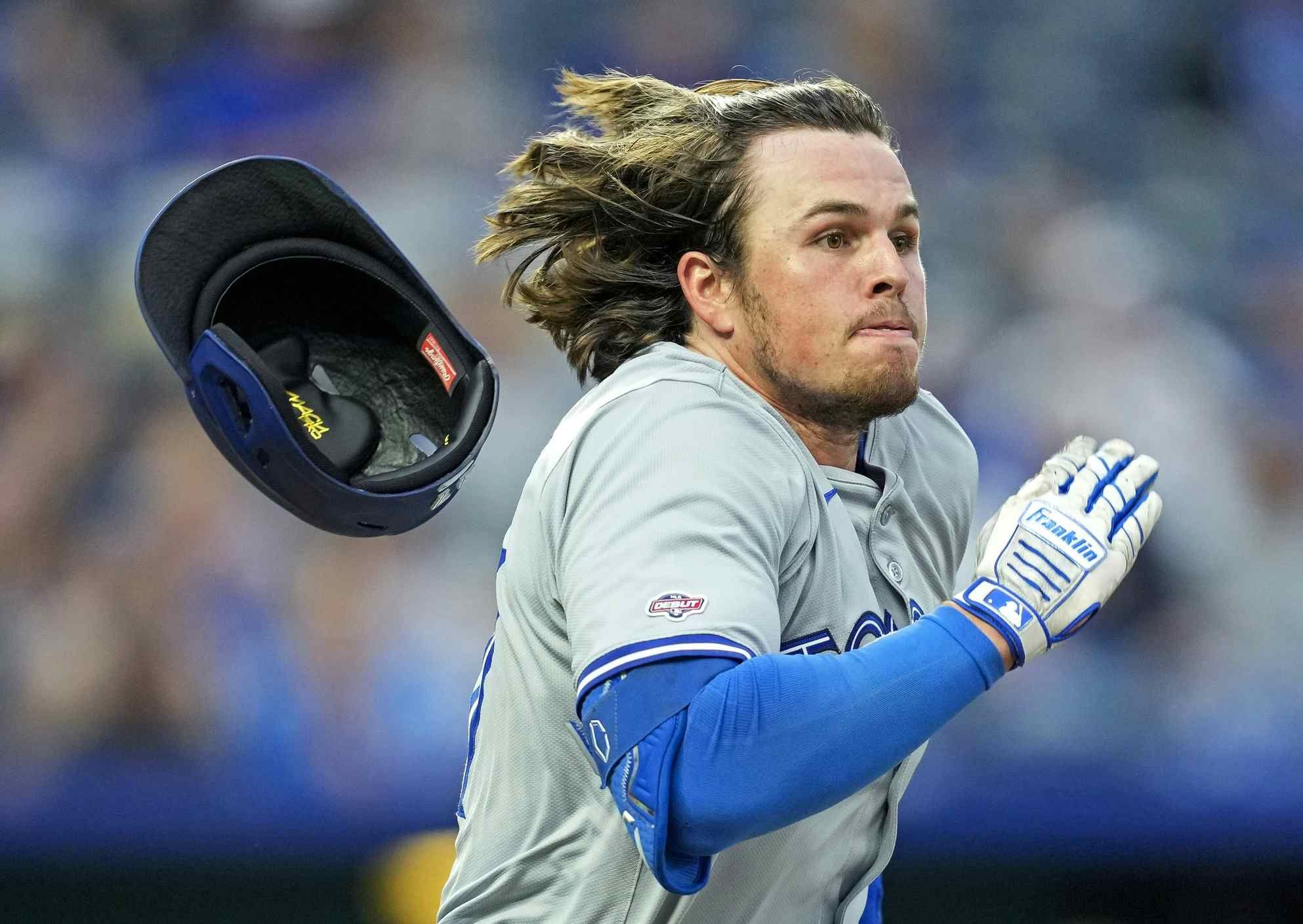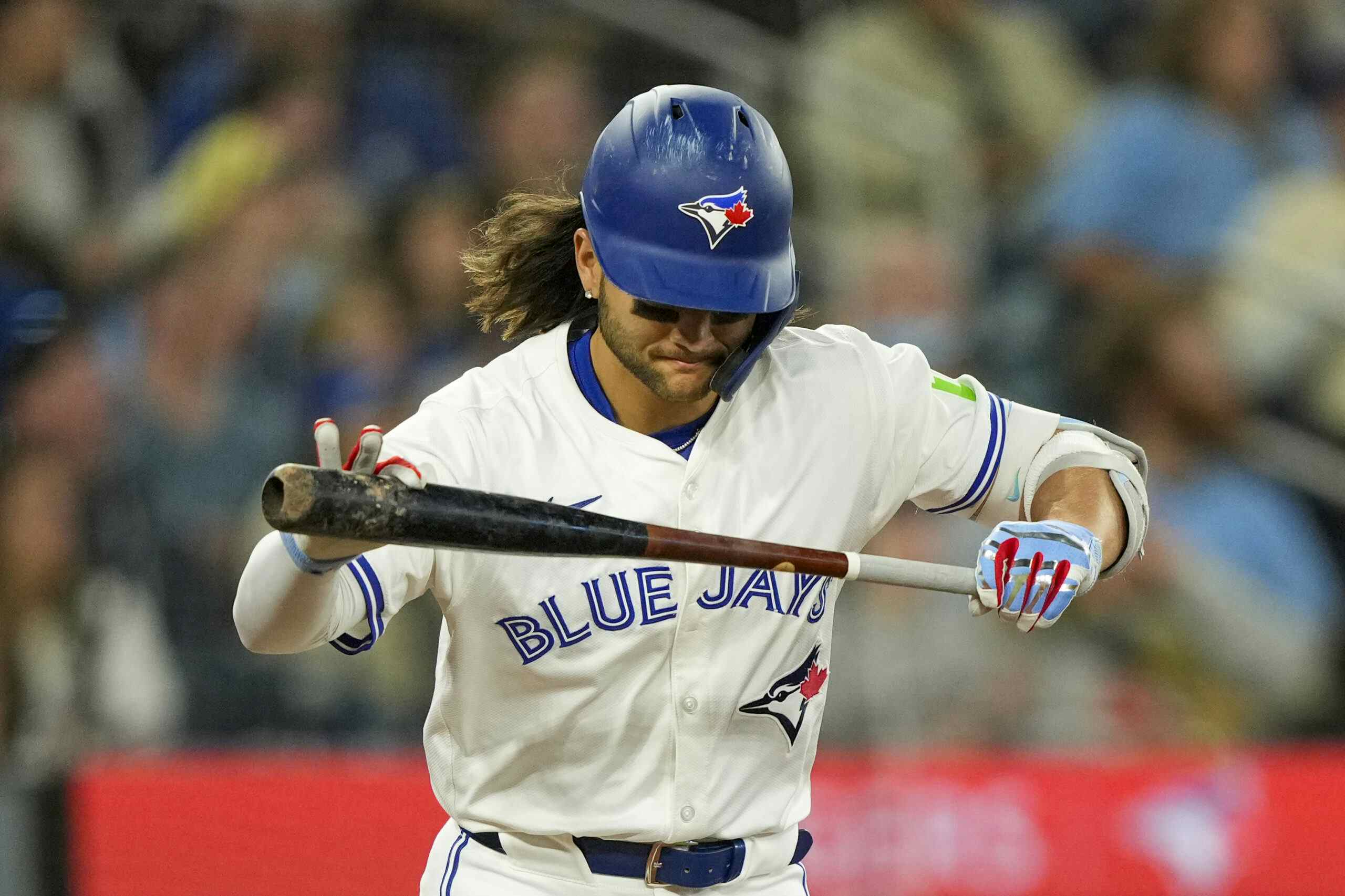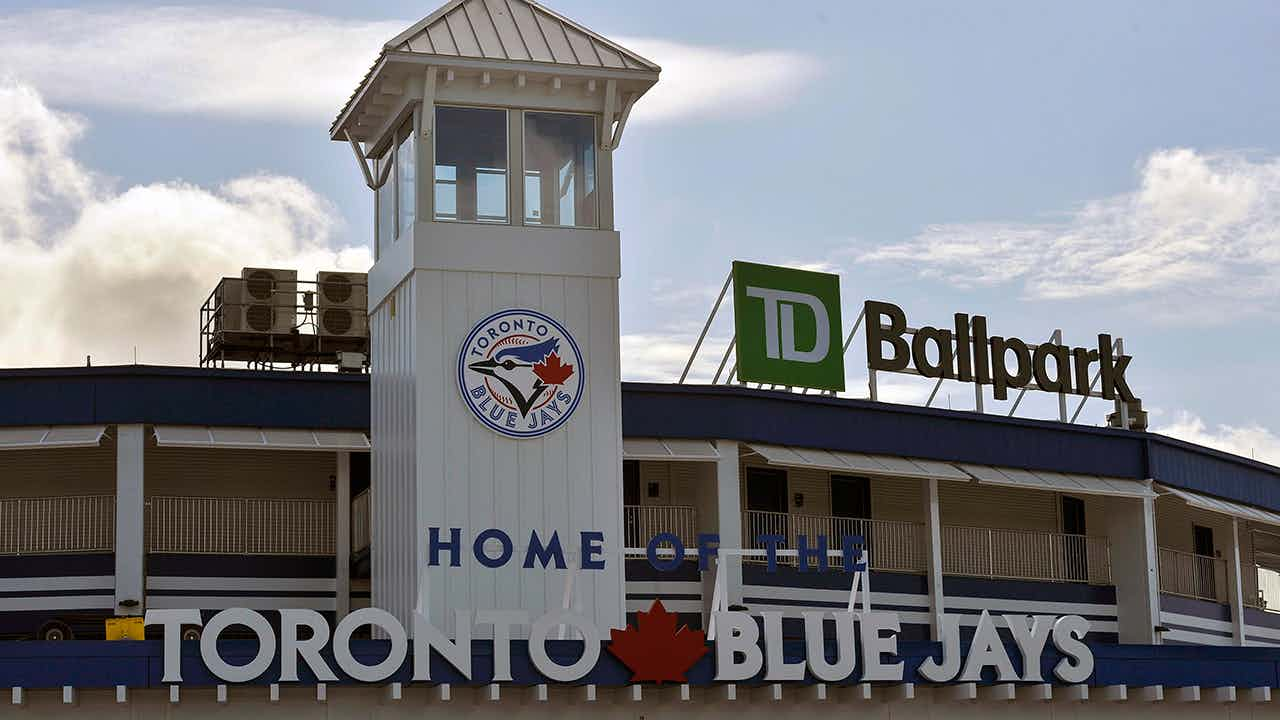Rival Preview: Royce Lewis and the Twins look to prove their 2023 division crown wasn’t just by default

By Evan Stack
1 month agoTo continue our Rival Preview series of other teams in the American League, let us now venture to the Twin Cities, home of last year’s AL Central champs and the team that ended Toronto’s season: the Minnesota Twins.
2023 Recap
The Twins finished with a record of 87-75, spending 176 calendar days in first place. The Guardians did as much as they could to try and keep pace with Minnesota, but an 18-9 September ultimately pushed the Twins into the postseason for good.
Offense: Minnesota’s offense operated “by committee” for the majority of the season, as there wasn’t a single player who played over 135 games in 2023. That committee was quietly pretty damn good, however, as the Twins were tied for first in the American League in home runs and fifth in RBIs. They had 12 hitters with a double-digit number of homers, with ten of those players of those hitting 14+.
Their biggest offensive story this season was the emergence of 3B/DH Royce Lewis, the first overall selection in the 2017 MLB draft. It had been a long and trying journey to the major leagues for Lewis, who had suffered multiple ACL injuries between the 2021 and 2022 seasons. After getting healthy this year, Lewis became an electric bat at the plate and a grand slam connoisseur. In 58 games, he slashed .309/.372/.548 with a .921 OPS, 15 home runs, 52 RBIs, and a 150 OPS+.
Not only was Lewis playing an integral part in Minnesota’s division-clinching down the stretch, but he was also breaking records along the way. A late-August/early-September barrage led him to become the first player in MLB history to hit four grand slams in an 18-game span. He also set the Twins record for most grand slams in a season and became the second Twins rookie to hit a home run in his first playoff game. He still dealt with hamstring and oblique injuries throughout the season and recovered from his second knee surgery, but he was impactful in the games he played, nonetheless.
Fellow rookies 2B Edouard Julien and OF Matt Wallner also impressed in their inaugural seasons. Julien finished seventh in Rookie of the Year voting after slashing .263/.381./459 with an .839 OPS, 16 home runs and 37 RBIs. Wallner posted a .249/.370/.507 slash line, with the slugging percentage correctly suggesting that he crushed baseballs last year; Wallner finished in the top 3% of the league in max exit velocity (116.4 mph). All three of the above rookies finished within the top 10 of the team’s bWAR rankings.
Minnesota certainly didn’t lean one way or the other when it came to having left- or right-handed hitters. Guys like Max Kepler, Ryan Jeffers, and Alex Kirilloff owned solid OPS’s, and others like Michael A. Taylor, and Joey Gallo made their presence known in the power department.
You’ll notice that I’ve hardly touched on the two superstar names in this organization in SS Carlos Correa and OF Byron Buxton. Correa had only one IL stint and played in 135 games, but he hit only .230 with a .711 OPS, 18 home runs and 65 RBIs. On the other hand, Buxton suffered rib and hamstring injuries despite only DH’ing throughout the 85 games he played this season. Buxton did hit 17 homers with 42 RBIs and a .731 OPS, but last year marked his fifth consecutive (non-COVID) season playing under 100 games.
Projections show that both Correa and Buxton should be better for the 2024 season, and I’m hoping that this is the case as a baseball fan in general. These two could easily turn Minnesota from a good team to a great one.
Pitching: While Seattle, Toronto, and Baltimore boasted quality starting rotations from 1 through 5, the Twins were home to an underrated rotation of their own, led by Jorge Lopez and Sonny Gray. Lopez was one of three players sent to the Twins by the Marlins in exchange for Luis Arraez last offseason. Lopez provided consistent productive results during his five years in Miami, and he gave the Twins a similar output during his first campaign with them. He held an 11-8 record with a 3.66 ERA, 10.9 K/9, and 1.16 WHIP through 32 starts; make that four straight seasons with a sub-4.00 ERA for him.
Albeit at the mercy of few less decisions and ten less innings, Gray posted one of the best seasons of his career. The 11-year vet pitched to a 2.79 ERA across 32 starts with a 1.15 WHIP and an MLB-best 0.4 HR/9. He finished second in Cy Young voting and earned his third All-Star nod, and he also tossed five scoreless innings in Minnesota’s ALWC-clinching game.
Outside of those two, 27-year-olds Joe Ryan and Bailey Ober consumed most of Minnesota’s starts with 29 and 26, respectively. Ryan posted a 2.21 ERA through his first 10 starts before tailing off at the end of the season. He did an exemplary job of keeping the strikeouts up and the walks down but struggled with allowing loud contact. Ober posted a career-high in innings pitched with a 3.43 ERA. While he won’t bring it velocity-wise, he was still very effective with his breaking and off-speed pitches.
The Twins also leaned on veterans Dallas Keuchel and Kenta Maeda in the backend of their rotation, with Louie Varland filling in where needed.
Out of the ‘pen, Minnesota was of course headlined by closer Jhoan Duran, who saved 27 games in his second major league season. Although the walks ticked up a little bit, Duran was still one of the best closers in the game, owning a 2.45 ERA and a 12.1 K/9 through 59 games, as well as maintaining his 101.8 mph fastball and 98.4 mph “splinker”. He also continued to be a Baseball Savant favourite, showing “dark red” in strikeout percentage, whiff percentage, fastball velocity, and more. Finally, I think this is a worthy platform to throw out that his entrance is one of the coolest in all of baseball.
Offseason Moves
Minnesota made multiple additions to their bullpen, a unit that finished 15th in the majors in ERA. They started by singing Josh Staumont, a right-handed reliever who was designated for assignment by the Kansas City Royals in November. Staumont showed a ton of promise between 2019 and 2021, holding a sub-3.00 ERA across those years and a four-seam fastball that averaged as high as 98 mph. However, his production took a steep decline over the previous two seasons, as he battled multiple neck injuries and inflated walk rates. The strikeout stuff is there, and this could be a low-risk, high-reward pick-up if the Twins can get Staumont back to his early-career form.
They also signed righty Jay Jackson, who we all know so well after his 2023 campaign in Toronto, to a one-year, $1.5 million deal with a club option for 2025. Jackson flourished in 25 outings last season with the Blue Jays, posting a 2.12 ERA and 0.91 WHIP, and he also had solid numbers in high-leverage situations.
They also bolstered the bullpen through the trade market, acquiring lefty reliever Steven Okert from the Miami Marlins in exchange for Nick Gordon. Okert (who’s name will never not stop autocorrecting in this article) is entering his seventh year in the majors and has spent three years in both San Francisco and Miami. After posting sub-3.00 ERAs in both 2021 and 2022, Okert held a 4.45 ERA in 64 appearances a season ago with a 1.26 WHIP and an 11.2 K/9. His splits against righties and lefties last season were very similar, but a K/9 of at least 11 in each of his last three seasons proves that strikeouts are his specialty.
As for Gordon, it appears that playing time for the former first-round pick would be sparse given how well Julien, Wallner, and Lewis played last year. He also lost his arbitration case with the Twins just days before the deal. Couple those reasons with his injury history and Miami’s surplus of left-handed relievers, and the Twins decided to cash in on a trade.
Minnesota parted ways with longtime infielder Jorge Polanco this offseason. The 10-year Twin was rumoured to be dealt to a couple of teams, but he was ultimately sent to the Seattle Mariners in exchange for SP Anthony DeSclafani, RP Justin Topa, OF Gabriel Gonzalez, RP Darren Bowen, and cash. Seattle parted ways with Eugenio Suarez earlier in the offseason and also received minimal production from their second basemen last season, so Polanco fits a team in need of an infielder and offensive production. The fact that Polanco can bat from both sides also helps.
I feel like Minnesota won this deal from both a quality and quantity perspective. We’ll start with DeSclafani, who will likely be battling for a rotation spot going into the season. He spent the last three seasons in San Francisco, most recently appearing in 19 games (18 starts) and posting a 4.88 ERA, 1.25 WHIP, and 7.1 K/9 last year. Multiple IL stints due to elbow, shoulder, and ankle injuries held him to only 23 starts between ’22 and ’23, so the Twins are hoping to get a healthy version of DeSclafani given he’s posted a sub-4.00 ERA the last two seasons that he has made 30+ starts.
Topa is probably the most underrated part of the deal. Last year, the 32-year-old reliever pitched in 75 games, holding a 2.61 ERA, 1.15 WHIP, 8.0 K/9, and 0.5 HR/9. Topa could easily find himself in a consistent 7th or 8th inning role with the Twins, but he’ll need to prove it as he had only appeared in 17 games in the majors prior to 2023 due to injuries.
Gonzalez and Bowen have already made their way into the Top 30 prospects in Minnesota’s system according to MLB.com. Gonzalez is only 20 years old and still has plenty of time before he reaches the majors. Multiple scouting sites rave about his contact skills, and he slashed .298/.361/.476 with an .837 OPS, 18 homers, and 84 RBIs in multiple levels of A-ball last season. Bowen is a few years older, but also spent last year in A-ball in the Mariners organization, posting a 3.88 ERA and 1.110 WHIP through 19 outings (15 starts). He did an impressive job keeping the hits and home runs down, but the part of his game that needs the most improvement is his command (4.04 BB/9).
Minnesota added veteran 1B/DH Carlos Santana in early February to a one-year, $5.25 million deal. Santana slashed .240/.318/.429 a season ago between the Pirates and the Brewers. He posted his highest OPS and number of doubles since 2019 last year, as the soon-t0-be 38-year-old looks to be an important piece to another contending club, a role he’s found himself in several times.
More recently, the Twins traded shortstop prospect Noah Miller to the Dodgers in exchange for OF Manuel Margot, minor leaguer SS Rayne Doncon, and cash. Margot fits their platoon style by mixing a right-handed outfield bat in a group of primarily lefties. He slashed .264/.310/.376 a year ago with the Rays, but he missed about a month last year with an elbow injury. Doncon is a utility man who struggled last year in A-ball, but according to multiple reports has legitimate power potential if he can straighten up his decision making at the dish.
My take on Minnesota’s 2024 outlook
Surely Minnesota is tired of the narrative-ridden AL Central; last year was all about how feeble their division was, and this year, the talk of the division seems to be all about the up-and-coming Tigers and Royals.
Their 2024 team is a lot like last year’s regarding their stash of right and left-handed bats, but as I mentioned earlier, Correa and Buxton could take this team to the next level. If Lewis, Julien, and Wallner can show improvement from their rookie to sophomore years, Minnesota may have themselves a foundation of a run of division titles.
They have some questions to answer in their starting rotation, especially since Sonny Gray earned himself a payday in St. Louis. Lopez is the clear ace, but Minnesota will need Ryan and Ober to establish themselves at the top of that rotation. Furthermore, they don’t have clear options behind those three, so Spring Training will be critical in helping Rocco Baldelli fill those spots.
They’re not a lock to repeat as AL Central champs, but the Twins should still be the favourites. As we get closer to the regular season starting, they could be darkhorse last-minute winners of the Jordan Montgomery or Blake sweepstakes on a team-friendly deal, especially since they sit around the middle of the pack in payroll.
ARTICLE PRESENTED BY BETANO

Recent articles from Evan Stack
- Three Key Things: Top of the order discourse continues in Toronto’s series loss to Kansas City
- José Berríos has been the ace the Blue Jays have needed early in the season
- Three Key Things: Blue Jays get excellent pitching after Kevin Gausman’s rough start, as Yariel Rodriguez, José Berríos, and Yimi Garcia shine





